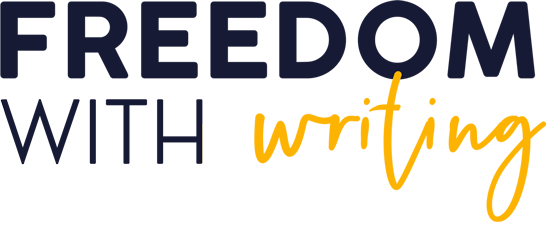Samia Madwar is a senior editor at The Walrus. She is also a member of the board of directors for Magazines Canada. When she isn’t editing or writing, she can be found in her backyard pulling weeds and wishing she knew more about gardening. Here’s her engaging interview with Viney Kirpal, a personal essay and health writer.
Viney: Hi Samia. You’re my first editor of a Canadian outlet and I’m delighted to have you here. What’s the story behind the name, The Walrus?
Samia: One of the magazine’s founders, David Berlin, came up with the name, which started out as a working title that then stuck. As I understand it, the idea behind it was that the US had the bald eagle as one of its national symbols, whereas Canada’s national animal is the beaver. The founders, including then publisher Ken Alexander, wanted to challenge the country’s identity with a larger, more irascible animal that was harder to ignore. Enter the walrus, which, among its other qualities, is louder and stinkier than a beaver. I’ve always enjoyed the quirky, unusual name, and I like that it has some lore.
Viney: That’s interesting! The Walrus has many sections that focus on various platforms of Canadian life. What are they about?
Samia: The Walrus is a registered charity with an educational mandate, which extends to our journalism. A general-interest approach allows us to produce thought-provoking, fact-based journalism on various aspects of our lives, and especially those of interest to Canadians. Stories can range from short essays (1,000 words) to long features (around 5,000 words), and we try to cover categories that include, but are not limited to, politics, business, health, science, environment, arts criticism, culture, and social issues such as education. Within the span of a week, we might publish stories on topics ranging from foreign interference in Canadian politics to the appeal of playing the Legend of Zelda. What is common among all of our stories is that they go beyond the scope of a typical news article. They don’t just address the what, when, where, why, and how of a story; they also try to answer the question, What does this mean? What can we learn from this? And that’s in part what makes them educational.
The most recent story I edited for our print magazine was a feature article by Meagan Gillmore titled “Have assisted Dying Laws Gone too Far?”?” The story details why people with disabilities are sounding the alarm about Canada’s medical assistance in death (MAID) legislation. MAID allows doctors to administer lethal drugs to patients with “grievous and irremediable” illness, disease, and disability whose “natural” deaths are deemed “reasonably foreseeable.” As Meagan puts it, “This would, presumably, allow individuals with terminal illnesses to end their lives when they wanted and on their own terms.” In this 5,000-word feature, she outlines the history of the legislation in Canada, including how it has been expanded over the past few years, and why some people with disabilities are turning to MAID because they lack the supports they need to continue living. The story isn’t just informative; it presents a number of perspectives that are often underrepresented in media coverage. It helps readers learn about the issue but also challenges them to think about it in a way they might not have previously. And it goes beyond the basic facts, exploring questions around the value that we place on life.
Viney: Wow! This is such a meaningful exploration. You also carry sections on Justice and Society.
Samia: The stories that appear with the slug “Justice” often deal with the legal system in Canada. For example, a recent story we published under that slug was about a First Nation’s legal battle for land rights. Another one was about fatal flaws in the corrections system.
Stories that are slugged “Society” are wide-ranging. Often, they deal with ways in which people behave. Recent stories in this category, for example, include an essay on what it means to long for a less noisy environment, a story on the history and revival of a Black neighbourhood in Vancouver, and an essay making the case for car-free school streets in Canadian cities.
Viney: This is what most readers want today. What’s the hardest part of editing The Walrus?
Samia: The hardest part of editing for The Walrus is also what makes the work so enjoyable and rewarding: it’s more than just cleaning up words. It takes time to pitch, write, edit, and fact check a story for The Walrus, and the process can be very involved. Often, I work with writers from the earliest stages, helping them hone their pitches until they’re just right. When I’m going through each draft of a story, I have to make sure that the writer has covered all the bases with their reporting, that the story is clearly written, and that it’s an engaging piece overall. Because our edits can take months, I also have to make sure the writer is comfortable with the process and that they feel supported throughout it. I enjoy the hands-on and collaborative nature of the work.
Viney: That’s challenging for you and the writers! So, what would make a pitch from an aspiring, especially non-Canadian writer, a winner for you?
Samia: Our mandate requires that 80 percent of our contributors be Canadian. That said, a pitch from a non-Canadian writer can be considered if it can clearly show why the story would be relevant to a Canadian audience. I also personally like to see that a pitch has been reported to some extent. One mistake freelancers commonly make when pitching is that they come to us with a series of questions, and they propose a story or essay that sets out to answer those questions. I often advise freelancers to come forward with the answers already in mind. The aim of the pitch, and the story, should be to show how you got at that answer. I can tell if a writer has done some upfront writing and research if they’ve spoken with sources to lay the groundwork for their stories. Going back to our educational mandate, a pitch also needs to show that it’s not just about a news item. It needs to show how the story would take a step further, to illustrate a takeaway.
To successfully pitch a feature to The Walrus, writers need to demonstrate that they’re not only well-informed on the topic, but that they can take the story further by exploring what it all means. When Meagan pitched me the idea, I knew that she had been reporting on this issue for years and had a solid thesis and through-line that she would focus on. This is what I look for in all pitches: clarity and confidence.
Viney: So true. Thanks, Samia! It was wonderful speaking with you. I’m sure some of our readers from Canada and elsewhere, conversant with the Canadian life, will try their hand at pitching you. Samia can be reached at pitch@thewalrus.ca

